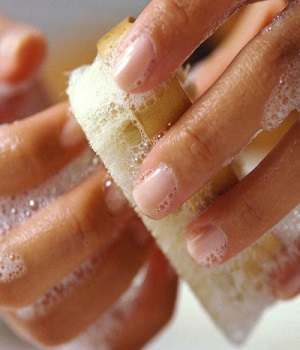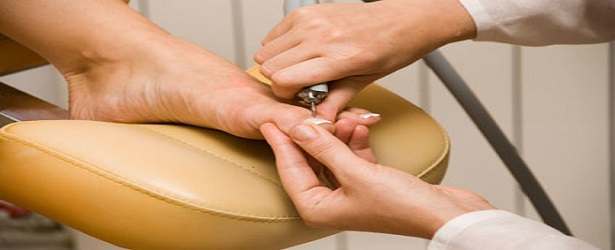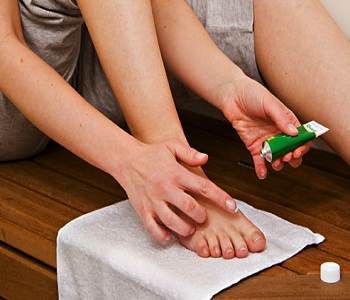Currently, there is a wide variety of treatments available on the market that all claim to treat and cure nail fungus. Some of these treatments are intended to be taken by mouth and others are topical treatments.
Topical treatments are available over the counter and as a prescription medication. There are two main types of treatments that can be found over the counter. Some of these treatments contain anti-fungal chemicals and others contain all-natural ingredients, also known as alternative treatments. The majority of the population prefers to use natural treatments because there is less risk of interactions, side effects, or damage to the organs.
Prescription Penlac – Topical Prescription Medication
 This medication is commonly known as Ciclopirox. It is a pretty new medication to the United States. This medication was approved by the FDA in 1999 and was approved in Canada in 2004. Before this medication was accepted by the FDA, prescription treatments for nail fungus infections were all pill form medications and worked on a systemic level. This meant that all prescription medications that were available posed health risks and could do serious damage to the liver.
This medication is commonly known as Ciclopirox. It is a pretty new medication to the United States. This medication was approved by the FDA in 1999 and was approved in Canada in 2004. Before this medication was accepted by the FDA, prescription treatments for nail fungus infections were all pill form medications and worked on a systemic level. This meant that all prescription medications that were available posed health risks and could do serious damage to the liver.
This medication comes in the form of a nail lacquer. It is painted on like nail polish. The main ingredient, ciclopirox, is considered a broad spectrum anti-fungal agent. Because the medication is painted on like nail polish, it is applied directly to the affected area. The chemical has time to soak into the nail and deliver the necessary anti-fungal agent to the affected area, which is the nail bed.
Since this medication is able to soak through the nail, there is no need for oral anti-fungal medications. The medication is usually prescribed for use for 10 to 12 weeks.
With the increase in the search for all-natural ingredients, there is a wide variety of options to choose from. You can choose a product from allopathic, prescription, natural, or homeopathic remedies. Natural remedies can be found at your local pharmacy and at major department stores, like Wal-Mart or Target.
If you are looking for an effective way to get rid of fungus that is completely natural and homeopathic, ClearFungus is a great option. It is available online and the company offers a great money back guarantee. There are a lot of different testimonials available on their website. The main ingredient is an all-natural fungicide that is combined with other all-natural ingredients. Not only does it help get rid of nail fungus, but it also promotes the growth of a new, healthy nail in its place.
 There are many different products available on the natural health market. Most of them are topical products that include the same basic ingredients, but at different strengths. Throughout the listings, there can be a huge difference in price between products.
There are many different products available on the natural health market. Most of them are topical products that include the same basic ingredients, but at different strengths. Throughout the listings, there can be a huge difference in price between products.
Before you purchase a product, you should read the ingredients list on the company website, or if you are at the store, you should read the label. Any product you purchase should include at least one anti-fungal ingredient in the main ingredient list. It should also include ingredients that promote healthy nail growth and preferably something to condition the surrounding skin to prevent irritation.
One of the best topical fungicides is Tea Tree Oil. It can be purchased at pharmacies, health food stores and online from a wide variety of retailers. The best products you will find contain 100% Tea Tree Oil and are found in spray, lacquer, or thick ointment form. The cream is not considered as effective as these methods.
It is a very personal decision when it comes to your preference in how to treat your nail fungus infection. The best way to find the treatment that is right for you is to talk to your doctor about medications you are on and your specific infection type. For mild to moderate infections, natural remedies may be the best way to treat. This is because prescription medication is a derivative of natural medications and some prescription medications have a similar chemical makeup. In the case of severe infection, it may be necessary to take prescription medication to treat the infection. No matter how you choose to treat your infection, you should research the treatment you are using thoroughly so that you know the risks, interactions, and side effects. Make sure to keep a journal of your progress to ensure that you are getting results.

 Subscribe Now
Subscribe Now

 When in public places where there is water, such as baths, swimming pools and locker rooms, wear protective footwear. These are perfect places for spores to be transferred from someone who already has a nail fungus.
When in public places where there is water, such as baths, swimming pools and locker rooms, wear protective footwear. These are perfect places for spores to be transferred from someone who already has a nail fungus.
 Surgery – Your doctor will use a local anesthetic to numb the skin around the nail. A tool is then used to separate your nail from the nail bed and surrounding skin. Once the nail is removed, the nail bed and skin should heal in about 3 weeks.
Surgery – Your doctor will use a local anesthetic to numb the skin around the nail. A tool is then used to separate your nail from the nail bed and surrounding skin. Once the nail is removed, the nail bed and skin should heal in about 3 weeks.
 What is less commonly known is that fingernails can also become infected, just as toenails can. Typically, the first sign of infection is the nail changing color and becoming thicker, especially across the tip of the finger nail. Because hands are open and difficult to cover up, it can be very embarrassing to those who suffer from it. The first instinct is to cover up the discoloration with nail polish. However, this can cause the infection to get worse because it seals in humidity and prevents light from getting to the fungus to destroy it. Nail polish creates the ultimate breeding ground underneath the nail by providing the exact environment that a fungus needs to survive. The fungus will not go away on its own, and without treatment it will get worse and could spread to other nails and other people.
What is less commonly known is that fingernails can also become infected, just as toenails can. Typically, the first sign of infection is the nail changing color and becoming thicker, especially across the tip of the finger nail. Because hands are open and difficult to cover up, it can be very embarrassing to those who suffer from it. The first instinct is to cover up the discoloration with nail polish. However, this can cause the infection to get worse because it seals in humidity and prevents light from getting to the fungus to destroy it. Nail polish creates the ultimate breeding ground underneath the nail by providing the exact environment that a fungus needs to survive. The fungus will not go away on its own, and without treatment it will get worse and could spread to other nails and other people.

 Home remedies are extremely effective, especially when treating the early signs and symptoms of toenail fungus. While some people still see home remedies as “iffy”, they are effective. When you really think about it, home remedies were the only option a few hundred years ago and science is showing that they are, in some cases, more effective than standard medicine.
Home remedies are extremely effective, especially when treating the early signs and symptoms of toenail fungus. While some people still see home remedies as “iffy”, they are effective. When you really think about it, home remedies were the only option a few hundred years ago and science is showing that they are, in some cases, more effective than standard medicine. Make sure to let your doctor know about any medications you are taking, both prescription and herbal, even vitamin supplements. Knowing this information lets your doctor make the right choice with the medication he or she prescribes, because some of them can cause severe interactions if used with other things.
Make sure to let your doctor know about any medications you are taking, both prescription and herbal, even vitamin supplements. Knowing this information lets your doctor make the right choice with the medication he or she prescribes, because some of them can cause severe interactions if used with other things.